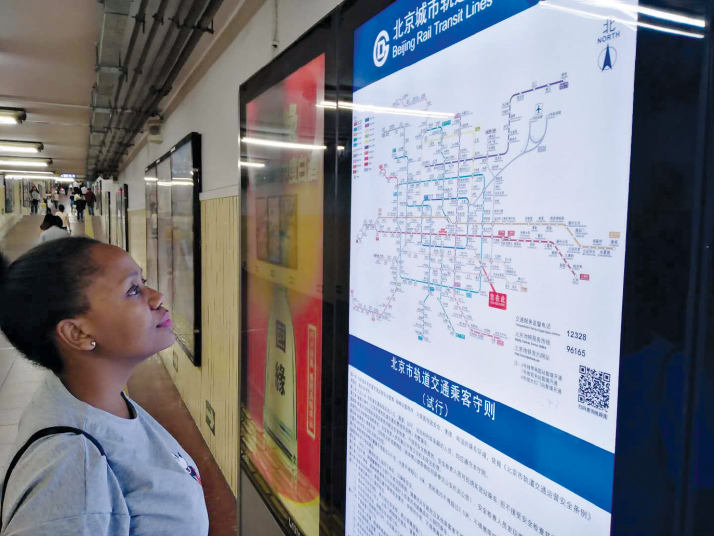|
||||||||||
| Home Nation World Business Opinion Lifestyle ChinAfrica Multimedia Columnists Documents Special Reports |
|
||||||||||
| Home Nation World Business Opinion Lifestyle ChinAfrica Multimedia Columnists Documents Special Reports |
| ChinAfrica |
| Subway Shenanigans |
| Being on the subway for the first time can be quite daunting but it gets easier over time |
| By Mmapula Molapong | VOL.11 June ·2019-06-19 |

(COURTESY PHOTO)
I arrived in Beijing toward the end of February this year. I come from Botswana, a country with a population of about 2 million people. Coming to China which has a population of about 1.4 billion people, with Beijing accommodating over 20 million of those people, was a culture shock for me.
I had never seen so many people in one place, although before I left home, my mother, who had been here a couple of times, told me there are a lot of people in China. I couldn't fathom what she meant until I arrived here and saw it for myself.
After a few days upon my arrival, a South African colleague and I, and of course with the help of my Botswana friend who is more familiar with the city, decided we would explore some parts of Beijing on our own. He got us on a DiDi (an Uber-like app) ride, showed us around and then took us to the subway station where we bought our first subway cards and had our first ride on the subway. We were so excited!
After a few days, I decided I would try and find the subway station on my own. I got badly lost and didn't make it to my intended destination, but with the help of a very kind Chinese young woman, I was able to find my way back home.
Having lived in China for just two months now, I have been fascinated by the effectiveness of public transport, especially the subway. I guess this is because I come from a country where we use mostly taxis and mini buses to get around. Despite my getting lost on the subway the first time, I eventually attempted riding it on my own and found it quite convenient.
Using public transport here is as convenient as having your own car. If you want to dodge the Beijing rush hour traffic, just hop in a subway station and travel underground where there is no traffic. In my country, driving your own car is the most convenient thing you can ever do for yourself, as public transport is well known for its delays and discomfort.
Although the subway in Beijing comes with walking for short or long distances, it is better than being stuck in the street traffic. Being used to driving my own car back home and suddenly living in this fast-developing country where you have to rely heavily on public transport can be quite daunting, but I have to say, I am now used to using public transport and am finding it quite convenient, comfortable and cheaper. The only problem for me is that during peak hours, the subways are so crowded because people are going to work or knocking off from work and people get squashed up against each other. That can be quite uncomfortable and can make the ride seem long.
Nevertheless, the beauty of the subway is that it opens around 5 a.m. and closes around 11 p.m. every day. Those are usually the hours that I would travel within. After 11 p.m. I can hail a taxi or a DiDi. The language barrier is not an issue on the subway as there are instructions in English so you won't get lost easily.
I have gotten to appreciate the fact that a country's public transport system can be operated so well after experiencing Beijing public transport.
According to chinahighlights.com, Beijing was equipped with a subway station in 1971, the first city in China. At the start of 2019, it has 22 subway lines, 391 subway stations, and 637 km of track. The city has the highest ridership which ranges between 9.8 million and 11.6 million per day in a normal week. Beijing Subway has the world's
second-largest subway system by route and length, following the Shanghai Metro.
(The writer is a reporter from Botswana currently on a 10-month program with the China-Africa Press Center)
| About Us | Contact Us | Advertise with Us | Subscribe |
| Copyright Beijing Review All rights reserved 京ICP备08005356号-5 京公网安备110102005860号 |